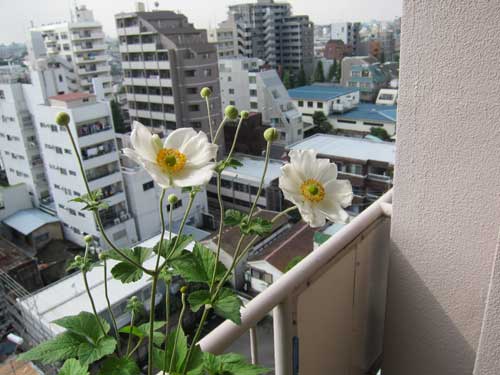
小笠原に自生するヤシの種類は二つあります。ビロウヤシはうちわ形の葉があって、辺りの植物より背が高いです。ノヤシは羽のような葉と木の幹に金の輪があります。
Ogasawara has two native palm trees. Both have very simple common names in Japanese: biroyashi, which means fan palm or Chinese fan palm, and noyashi, a feather palm that uses the “no” of Nakano, which means field or rustic. The noyashi has beautiful, almost golden leaf bases on its trunk. Below, in a nature sanctuary on the east side of Chichijima, the biroyashi rise above the low scrub on steep cliffs.

